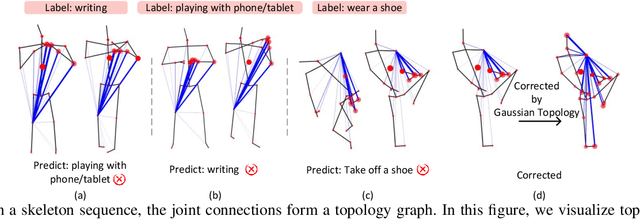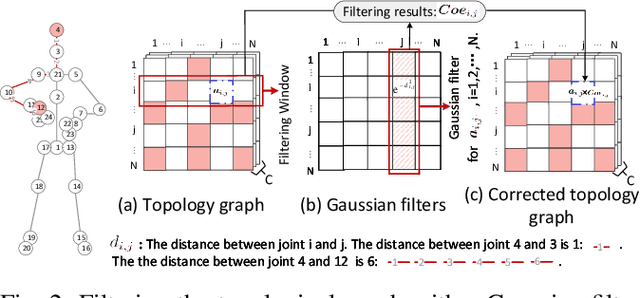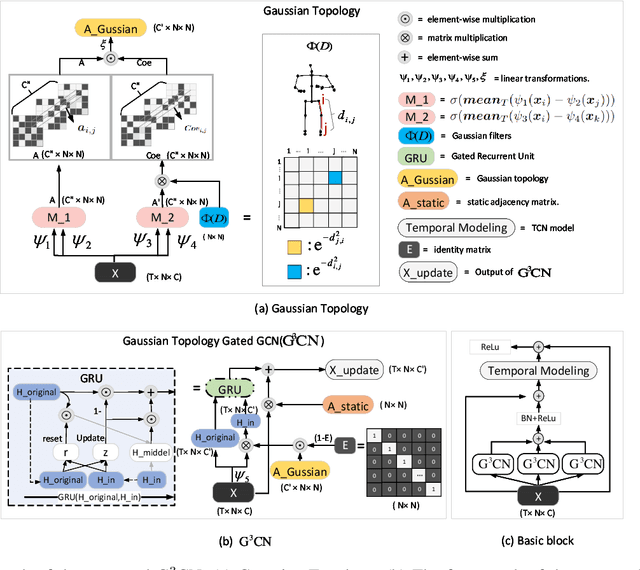Information Extraction
Information extraction is the process of automatically extracting structured information from unstructured text data.
Papers and Code
REMOTE: A Unified Multimodal Relation Extraction Framework with Multilevel Optimal Transport and Mixture-of-Experts
Sep 05, 2025



Multimodal relation extraction (MRE) is a crucial task in the fields of Knowledge Graph and Multimedia, playing a pivotal role in multimodal knowledge graph construction. However, existing methods are typically limited to extracting a single type of relational triplet, which restricts their ability to extract triplets beyond the specified types. Directly combining these methods fails to capture dynamic cross-modal interactions and introduces significant computational redundancy. Therefore, we propose a novel \textit{unified multimodal Relation Extraction framework with Multilevel Optimal Transport and mixture-of-Experts}, termed REMOTE, which can simultaneously extract intra-modal and inter-modal relations between textual entities and visual objects. To dynamically select optimal interaction features for different types of relational triplets, we introduce mixture-of-experts mechanism, ensuring the most relevant modality information is utilized. Additionally, considering that the inherent property of multilayer sequential encoding in existing encoders often leads to the loss of low-level information, we adopt a multilevel optimal transport fusion module to preserve low-level features while maintaining multilayer encoding, yielding more expressive representations. Correspondingly, we also create a Unified Multimodal Relation Extraction (UMRE) dataset to evaluate the effectiveness of our framework, encompassing diverse cases where the head and tail entities can originate from either text or image. Extensive experiments show that REMOTE effectively extracts various types of relational triplets and achieves state-of-the-art performanc on almost all metrics across two other public MRE datasets. We release our resources at https://github.com/Nikol-coder/REMOTE.
SliceSemOcc: Vertical Slice Based Multimodal 3D Semantic Occupancy Representation
Sep 04, 2025Driven by autonomous driving's demands for precise 3D perception, 3D semantic occupancy prediction has become a pivotal research topic. Unlike bird's-eye-view (BEV) methods, which restrict scene representation to a 2D plane, occupancy prediction leverages a complete 3D voxel grid to model spatial structures in all dimensions, thereby capturing semantic variations along the vertical axis. However, most existing approaches overlook height-axis information when processing voxel features. And conventional SENet-style channel attention assigns uniform weight across all height layers, limiting their ability to emphasize features at different heights. To address these limitations, we propose SliceSemOcc, a novel vertical slice based multimodal framework for 3D semantic occupancy representation. Specifically, we extract voxel features along the height-axis using both global and local vertical slices. Then, a global local fusion module adaptively reconciles fine-grained spatial details with holistic contextual information. Furthermore, we propose the SEAttention3D module, which preserves height-wise resolution through average pooling and assigns dynamic channel attention weights to each height layer. Extensive experiments on nuScenes-SurroundOcc and nuScenes-OpenOccupancy datasets verify that our method significantly enhances mean IoU, achieving especially pronounced gains on most small-object categories. Detailed ablation studies further validate the effectiveness of the proposed SliceSemOcc framework.
Layer-wise Analysis for Quality of Multilingual Synthesized Speech
Sep 05, 2025While supervised quality predictors for synthesized speech have demonstrated strong correlations with human ratings, their requirement for in-domain labeled training data hinders their generalization ability to new domains. Unsupervised approaches based on pretrained self-supervised learning (SSL) based models and automatic speech recognition (ASR) models are a promising alternative; however, little is known about how these models encode information about speech quality. Towards the goal of better understanding how different aspects of speech quality are encoded in a multilingual setting, we present a layer-wise analysis of multilingual pretrained speech models based on reference modeling. We find that features extracted from early SSL layers show correlations with human ratings of synthesized speech, and later layers of ASR models can predict quality of non-neural systems as well as intelligibility. We also demonstrate the importance of using well-matched reference data.
G3CN: Gaussian Topology Refinement Gated Graph Convolutional Network for Skeleton-Based Action Recognition
Sep 09, 2025



Graph Convolutional Networks (GCNs) have proven to be highly effective for skeleton-based action recognition, primarily due to their ability to leverage graph topology for feature aggregation, a key factor in extracting meaningful representations. However, despite their success, GCNs often struggle to effectively distinguish between ambiguous actions, revealing limitations in the representation of learned topological and spatial features. To address this challenge, we propose a novel approach, Gaussian Topology Refinement Gated Graph Convolution (G$^{3}$CN), to address the challenge of distinguishing ambiguous actions in skeleton-based action recognition. G$^{3}$CN incorporates a Gaussian filter to refine the skeleton topology graph, improving the representation of ambiguous actions. Additionally, Gated Recurrent Units (GRUs) are integrated into the GCN framework to enhance information propagation between skeleton points. Our method shows strong generalization across various GCN backbones. Extensive experiments on NTU RGB+D, NTU RGB+D 120, and NW-UCLA benchmarks demonstrate that G$^{3}$CN effectively improves action recognition, particularly for ambiguous samples.
Generalized User-Oriented Image Semantic Coding Empowered by Large Vision-Language Model
Sep 10, 2025Semantic communication has shown outstanding performance in preserving the overall source information in wireless transmission. For semantically rich content such as images, human users are often interested in specific regions depending on their intent. Moreover, recent semantic coding models are mostly trained on specific datasets. However, real-world applications may involve images out of the distribution of training dataset, which makes generalization a crucial but largely unexplored problem. To incorporate user's intent into semantic coding, in this paper, we propose a generalized user-oriented image semantic coding (UO-ISC) framework, where the user provides a text query indicating its intent. The transmitter extracts features from the source image which are relevant to the user's query. The receiver reconstructs an image based on those features. To enhance the generalization ability, we integrate contrastive language image pre-training (CLIP) model, which is a pretrained large vision-language model (VLM), into our proposed UO-ISC framework. To evaluate the relevance between the reconstructed image and the user's query, we introduce the user-intent relevance loss, which is computed by using a pretrained large VLM, large language-and-vision assistant (LLaVA) model. When performing zero-shot inference on unseen objects, simulation results show that the proposed UO-ISC framework outperforms the state-of-the-art query-aware image semantic coding in terms of the answer match rate.
Spectrotemporal Feature Extraction in EHG Signals and Tocograms for Enhanced Preterm Birth Prediction
Sep 09, 2025Preterm birth (PTB), defined as delivery before 37 weeks of gestation, is a leading cause of neonatal mortality and long term health complications. Early detection is essential for enabling timely medical interventions. Electrohysterography (EHG) and tocography (TOCO) are promising non invasive tools for PTB prediction, but prior studies often suffer from class imbalance, improper oversampling, and reliance on features with limited physiological relevance. This work presents a machine learning pipeline incorporating robust preprocessing, physiologically grounded feature extraction, and rigorous evaluation. Features were extracted from EHG (and TOCO) signals using Mel frequency cepstral coefficients, statistical descriptors of wavelet coefficients, and peaks of the normalized power spectrum. Signal quality was enhanced via Karhunen Lo\`eve Transform (KLT) denoising through eigenvalue based subspace decomposition. Multiple classifiers, including Logistic Regression, Support Vector Machines, Random Forest, Gradient Boosting, Multilayer Perceptron, and CatBoost, were evaluated on the TPEHGT dataset. The CatBoost classifier with KLT denoising achieved the highest performance on fixed interval segments of the TPEHGT dataset, reaching 97.28% accuracy and an AUC of 0.9988. Ablation studies confirmed the critical role of both KLT denoising and physiologically informed features. Comparative analysis showed that including TOCO signals did not substantially improve prediction over EHG alone, highlighting the sufficiency of EHG for PTB detection. These results demonstrate that combining denoising with domain relevant features can yield highly accurate, robust, and clinically interpretable models, supporting the development of cost effective and accessible PTB prediction tools, particularly in low resource healthcare settings.
Efficient Video-to-Audio Generation via Multiple Foundation Models Mapper
Sep 05, 2025Recent Video-to-Audio (V2A) generation relies on extracting semantic and temporal features from video to condition generative models. Training these models from scratch is resource intensive. Consequently, leveraging foundation models (FMs) has gained traction due to their cross-modal knowledge transfer and generalization capabilities. One prior work has explored fine-tuning a lightweight mapper network to connect a pre-trained visual encoder with a text-to-audio generation model for V2A. Inspired by this, we introduce the Multiple Foundation Model Mapper (MFM-Mapper). Compared to the previous mapper approach, MFM-Mapper benefits from richer semantic and temporal information by fusing features from dual visual encoders. Furthermore, by replacing a linear mapper with GPT-2, MFM-Mapper improves feature alignment, drawing parallels between cross-modal features mapping and autoregressive translation tasks. Our MFM-Mapper exhibits remarkable training efficiency. It achieves better performance in semantic and temporal consistency with fewer training consuming, requiring only 16\% of the training scale compared to previous mapper-based work, yet achieves competitive performance with models trained on a much larger scale.
KGRAG-SC: Knowledge Graph RAG-Assisted Semantic Communication
Sep 05, 2025



The state-of-the-art semantic communication (SC) schemes typically rely on end-to-end deep learning frameworks that lack interpretability and struggle with robust semantic selection and reconstruction under noisy conditions. To address this issue, this paper presents KGRAG-SC, a knowledge graph-assisted SC framework that leverages retrieval-augmented generation principles. KGRAG-SC employs a multi-dimensional knowledge graph, enabling efficient semantic extraction through community-guided entity linking and GraphRAG-assisted processing. The transmitter constructs minimal connected subgraphs that capture essential semantic relationships and transmits only compact entity indices rather than full text or semantic triples. An importance-aware adaptive transmission strategy provides unequal error protection based on structural centrality metrics, prioritizing critical semantic elements under adverse channel conditions. At the receiver, large language models perform knowledge-driven text reconstruction using the shared knowledge graph as structured context, ensuring robust semantic recovery even with partial information loss. Experimental results demonstrate that KGRAG-SC achieves superior semantic fidelity in low Signal-to-Noise Ratio (SNR) conditions while significantly reducing transmission overhead compared to traditional communication methods, highlighting the effectiveness of integrating structured knowledge representation with generative language models for SC systems.
Predicting person-level injury severity using crash narratives: A balanced approach with roadway classification and natural language process techniques
Sep 09, 2025Predicting injuries and fatalities in traffic crashes plays a critical role in enhancing road safety, improving emergency response, and guiding public health interventions. This study investigates the added value of unstructured crash narratives (written by police officers at the scene) when combined with structured crash data to predict injury severity. Two widely used Natural Language Processing (NLP) techniques, Term Frequency-Inverse Document Frequency (TF-IDF) and Word2Vec, were employed to extract semantic meaning from the narratives, and their effectiveness was compared. To address the challenge of class imbalance, a K-Nearest Neighbors-based oversampling method was applied to the training data prior to modeling. The dataset consists of crash records from Kentucky spanning 2019 to 2023. To account for roadway heterogeneity, three road classification schemes were used: (1) eight detailed functional classes (e.g., Urban Two-Lane, Rural Interstate, Urban Multilane Divided), (2) four broader paired categories (e.g., Urban vs. Rural, Freeway vs. Non-Freeway), and (3) a unified dataset without classification. A total of 102 machine learning models were developed by combining structured features and narrative-based features using the two NLP techniques alongside three ensemble algorithms: XGBoost, Random Forest, and AdaBoost. Results demonstrate that models incorporating narrative data consistently outperform those relying solely on structured data. Among all combinations, TF-IDF coupled with XGBoost yielded the most accurate predictions in most subgroups. The findings highlight the power of integrating textual and structured crash information to enhance person-level injury prediction. This work offers a practical and adaptable framework for transportation safety professionals to improve crash severity modeling, guide policy decisions, and design more effective countermeasures.
TemporalFlowViz: Parameter-Aware Visual Analytics for Interpreting Scramjet Combustion Evolution
Sep 05, 2025Understanding the complex combustion dynamics within scramjet engines is critical for advancing high-speed propulsion technologies. However, the large scale and high dimensionality of simulation-generated temporal flow field data present significant challenges for visual interpretation, feature differentiation, and cross-case comparison. In this paper, we present TemporalFlowViz, a parameter-aware visual analytics workflow and system designed to support expert-driven clustering, visualization, and interpretation of temporal flow fields from scramjet combustion simulations. Our approach leverages hundreds of simulated combustion cases with varying initial conditions, each producing time-sequenced flow field images. We use pretrained Vision Transformers to extract high-dimensional embeddings from these frames, apply dimensionality reduction and density-based clustering to uncover latent combustion modes, and construct temporal trajectories in the embedding space to track the evolution of each simulation over time. To bridge the gap between latent representations and expert reasoning, domain specialists annotate representative cluster centroids with descriptive labels. These annotations are used as contextual prompts for a vision-language model, which generates natural-language summaries for individual frames and full simulation cases. The system also supports parameter-based filtering, similarity-based case retrieval, and coordinated multi-view exploration to facilitate in-depth analysis. We demonstrate the effectiveness of TemporalFlowViz through two expert-informed case studies and expert feedback, showing TemporalFlowViz enhances hypothesis generation, supports interpretable pattern discovery, and enhances knowledge discovery in large-scale scramjet combustion analysis.
 Add to Chrome
Add to Chrome Add to Firefox
Add to Firefox Add to Edge
Add to Edge